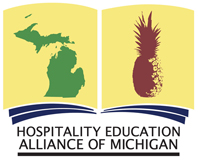Start Date
2011 12:00 AM
Description
Since the airline industry introduced the first loyalty program in the early 1980s (Lacey and Sneath, 2006), loyalty programs are common in many hospitality sectors including hotels, restaurants, casinos, and rental cars (Baloglu, 2002). As one of many relationship marketing tactics, loyalty programs aim to develop repeat purchases by rewarding customers with added benefits such as recognition, preferred treatment, access to special products and services, and incentives (Kivetz and Simonson, 2002; Sharp and Sharp, 1997). They also aim to foster customers’ loyalty by building closer and longer-term relationships between the company and customers (Meyer-Waarden, 2008; Sharp and Sharp, 1997; Yi and Jeon, 2003). Meyer-Waarden (2008) suggests that loyalty program members and nonmembers have different purchasing behaviors. Loyalty program members identify more strongly with a company (Oliver, 1999). Furthermore, some research suggests that programs are designed to impact loyalty attitudes and behaviors (Kivetz, Urminsky, and Zheng, 2006; Lewis, 2004; Taylor and Neslin, 2005) empirical research has also shown weak or no significant impact of programs on attitudes or behaviors (Dowling and Uncles, 1997; Sharp and Sharp, 1997).
The aim of this study is to examine customer loyalty in the context of tourism and hospitality systems; particularly to empirically test whether loyalty program members are truly more loyal than nonmembers along customer satisfaction, delight, and loyalty.
Are Loyalty Program Members More Loyal than Nonmembers?
Since the airline industry introduced the first loyalty program in the early 1980s (Lacey and Sneath, 2006), loyalty programs are common in many hospitality sectors including hotels, restaurants, casinos, and rental cars (Baloglu, 2002). As one of many relationship marketing tactics, loyalty programs aim to develop repeat purchases by rewarding customers with added benefits such as recognition, preferred treatment, access to special products and services, and incentives (Kivetz and Simonson, 2002; Sharp and Sharp, 1997). They also aim to foster customers’ loyalty by building closer and longer-term relationships between the company and customers (Meyer-Waarden, 2008; Sharp and Sharp, 1997; Yi and Jeon, 2003). Meyer-Waarden (2008) suggests that loyalty program members and nonmembers have different purchasing behaviors. Loyalty program members identify more strongly with a company (Oliver, 1999). Furthermore, some research suggests that programs are designed to impact loyalty attitudes and behaviors (Kivetz, Urminsky, and Zheng, 2006; Lewis, 2004; Taylor and Neslin, 2005) empirical research has also shown weak or no significant impact of programs on attitudes or behaviors (Dowling and Uncles, 1997; Sharp and Sharp, 1997).
The aim of this study is to examine customer loyalty in the context of tourism and hospitality systems; particularly to empirically test whether loyalty program members are truly more loyal than nonmembers along customer satisfaction, delight, and loyalty.
